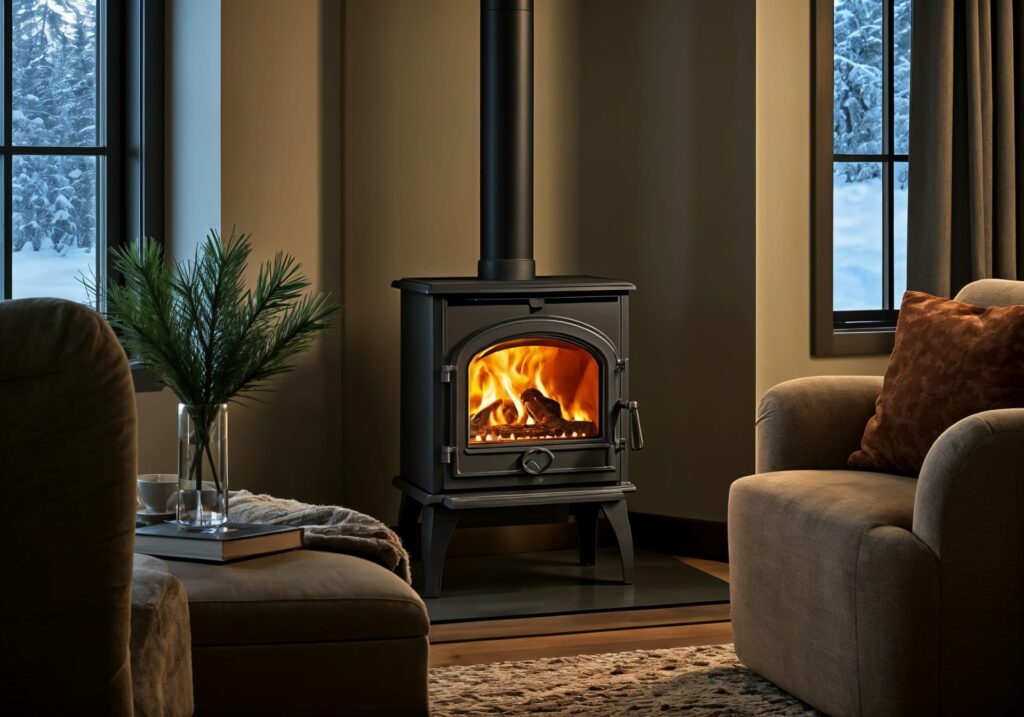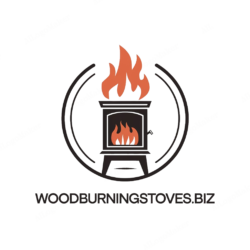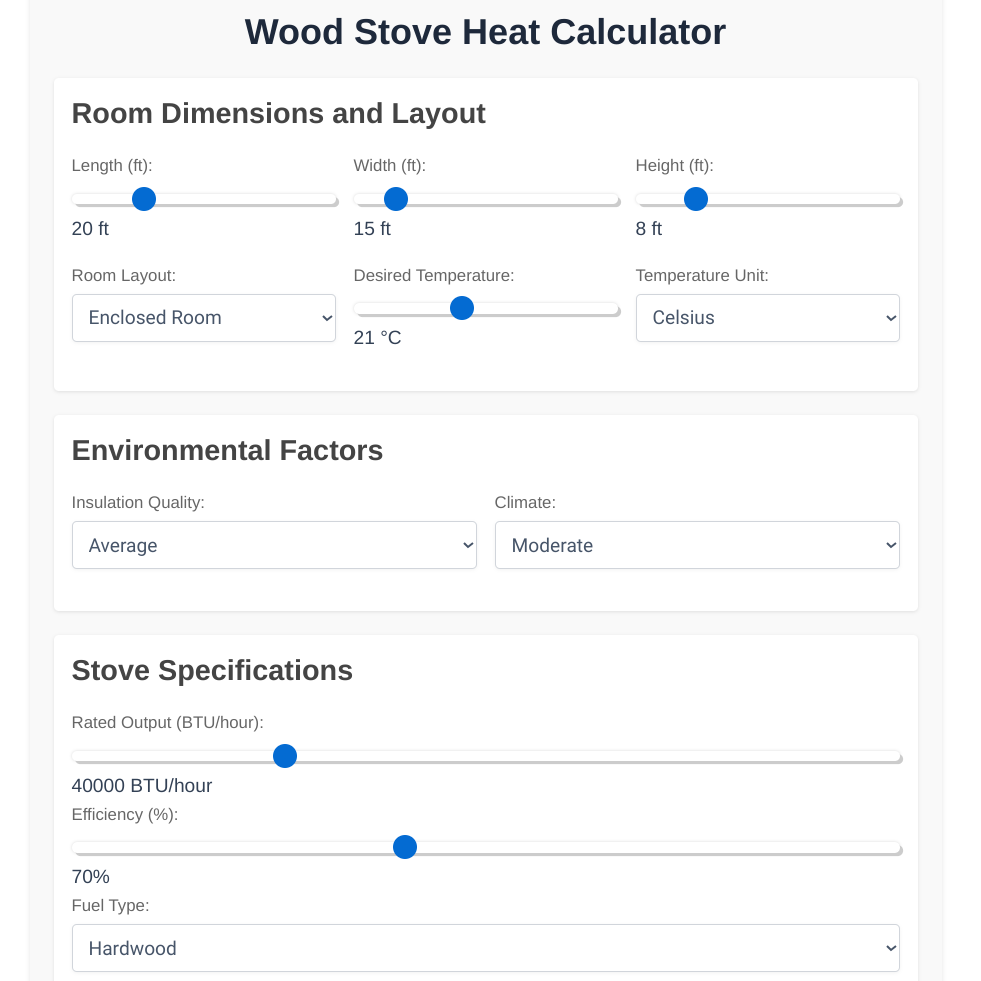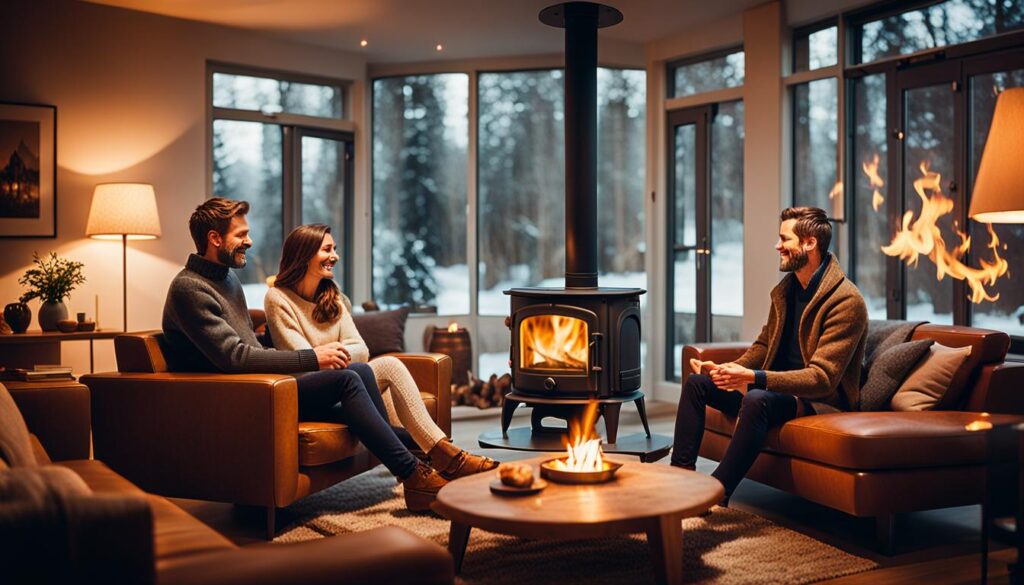As the world embraces a more environmentally conscious lifestyle, wood stoves have become an increasingly popular choice for heating homes. But, selecting the right wood stove isn’t just about aesthetics; it’s crucial to choose a size that perfectly matches your heating needs and lifestyle. In this comprehensive guide, we’ll delve into the key features to consider, provide expert insights, and offer a straightforward approach to determining the ideal wood stove size for your home.

Understanding Key Features
1. Heat Output and BTU Ratings
Size Matters: Choosing the Right BTU for Your Space
| BTU Rating | Typical Heating Area | Room Size |
|---|---|---|
| 10,000 – 30,000 | Small to Medium | 100-500 sq. ft. (Small rooms, apartments) |
| 30,000 – 60,000 | Medium to Large | 500-1,500 sq. ft. (Average homes, open-plan spaces) |
| 60,000 – 90,000 | Large | 1,500-3,000 sq. ft. (Big homes, well-insulated spaces) |
| Above 90,000 | Extra Large | Over 3,000 sq. ft. (Very large, poorly insulated homes) |
- BTU (British Thermal Unit): Measures the stove’s heat output. A higher rating indicates more heating power.
- Tip: Always consider your home’s insulation quality, window size, and local climate when choosing a BTU rating.
2. Coverage Area and Efficiency
Maximizing Warmth, Minimizing Waste
- Coverage Area: The square footage a stove can effectively heat. Ensure the stove’s capacity matches your room’s size.
- Efficiency: The stove’s ability to convert wood into usable heat. Look for stoves with high efficiency ratings to save on wood and minimize environmental impact.
Installation and Maintenance: Safety First
Safety Considerations and Best Practices
- Fire Safety:
- Use dry, seasoned wood.
- Never leave the stove unattended.
- Ensure working smoke and carbon monoxide detectors are installed.
- Best Practices:
- Properly store firewood.
- Maintain optimal airflow.
- Understand ash disposal procedures.
Expert Insight: Ensuring Safe Use
“For wood stove use, focus on three key areas: installation (comply with regulations regarding distance from combustible materials), what you burn (only dry, seasoned wood), and how you burn it (follow best practices for airflow and maintenance).”
— Graham Clarke, VP – Engineering, Carson Dunlop & Associates Ltd.
Determining the Right Wood Stove Size for Your Home
Step-by-Step Guide
- Calculate Your Heating Needs:
- Measure the room(s) to be heated in square feet.
- Consider the insulation quality, window size, and local climate.
- Choose Your BTU Rating:
- Refer to the BTU Rating Table above.
- Select a rating that matches your calculated heating needs.
- Assess Your Space for Efficiency:
- Ensure the stove’s coverage area aligns with your room size.
- Opt for a stove with a high efficiency rating.
- Consult with a Professional:
- If unsure, consult with a home inspection expert or a certified wood stove installer.
Discover: Full description of calculating your Heating Needs with our calculator
Wood Stove Size by Home Type
| Home Type | Typical Square Footage | Recommended BTU Range | Considerations |
|---|---|---|---|
| Apartment/Condo | 500-1,000 sq. ft. | 10,000-30,000 BTU | Insulation, shared walls, and windows. |
| Small Home/Cottage | 1,000-2,000 sq. ft. | 20,000-50,000 BTU | Well-insulated homes may require less. |
| Average Single-Family Home | 2,000-3,500 sq. ft. | 30,000-70,000 BTU | Consider the layout and insulation quality. |
| Large Home/Mansion | 3,500-6,000 sq. ft. | 60,000-120,000 BTU | Multiple stoves or a central heating system might be necessary. |
| Mobile/Manufactured Home | 500-2,000 sq. ft. | 10,000-40,000 BTU | Unique insulation and ventilation requirements. |
Regional Heating Needs
| Region | Climate Characteristics | Heating Season | Recommended BTU Adjustment |
|---|---|---|---|
| Northeast (USA) | Cold Winters, Mild Summers | Oct-Apr | +10-20% to BTU rating for extreme cold snaps. |
| Southwest (USA) | Mild Winters, Hot Summers | Dec-Feb | -20-30% to BTU rating due to shorter, milder winters. |
| Pacific Northwest (USA) | Mild, Wet Winters | Nov-Mar | Standard BTU ratings apply, emphasizing efficiency for consistent, low-grade heat. |
| Northern Europe | Cold, Dark Winters | Sep-Apr | +15-25% to BTU rating to combat prolonged cold periods. |
| Southern Hemisphere (e.g., Australia, NZ) | Reversed Seasons | Jun-Sep | Adjust BTU rating based on the region’s specific winter severity. |
Latest Trends and Considerations (2024)
- Environmental Impact: Look for stoves with low particulate matter emissions.
- Smart Stoves: Some modern wood stoves integrate with smart home systems for optimized efficiency and safety.
Conclusion
Choosing the right size wood stove for your home is a balanced act between heating needs, efficiency, and safety considerations. By understanding BTU ratings, coverage areas, and following expert advice on installation and maintenance, you’ll not only enjoy a warmly heated home but also contribute to a more sustainable environment.
References
- Semmens E, Noonan C, Allen R, Weiler E, Ward T (2015) Indoor particulate matter in rural, wood stove heated homes. Environ Res 138:93–100
- Latest guidelines from the U.S. Environmental Protection Agency (EPA) on wood stove emissions.


